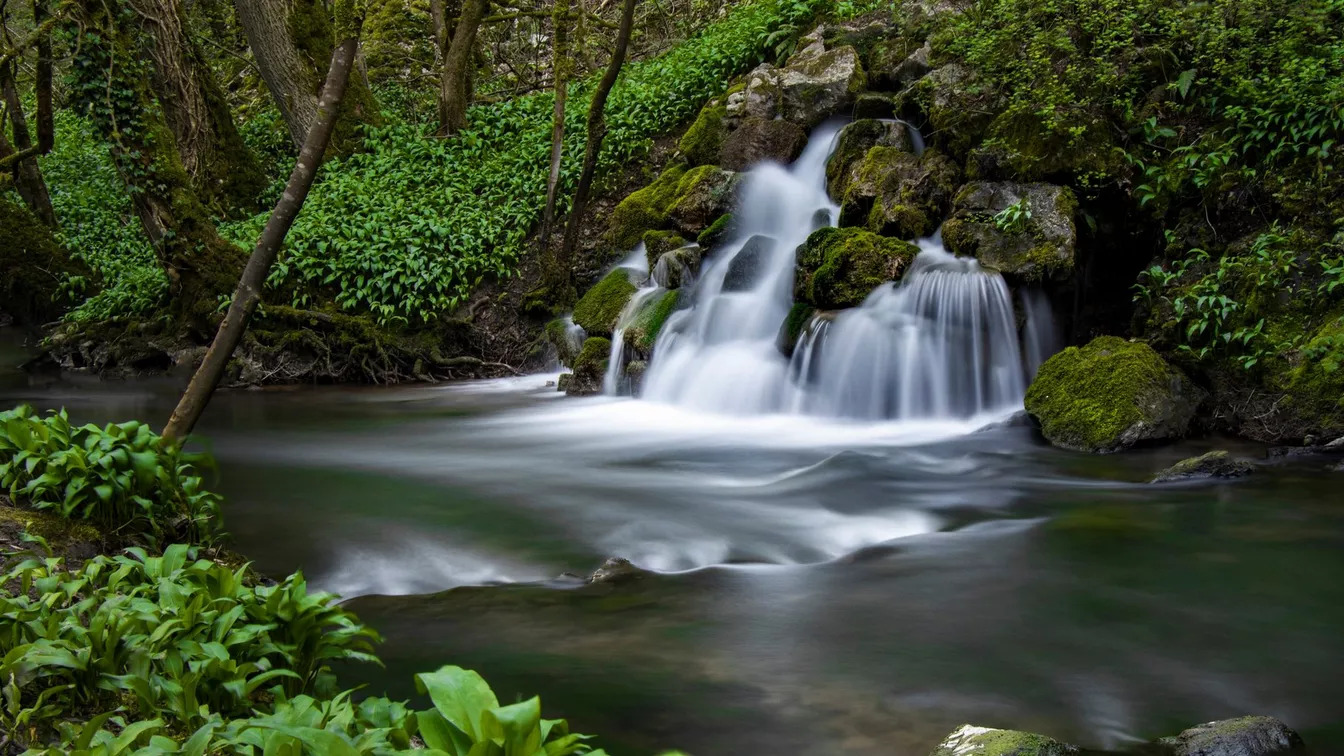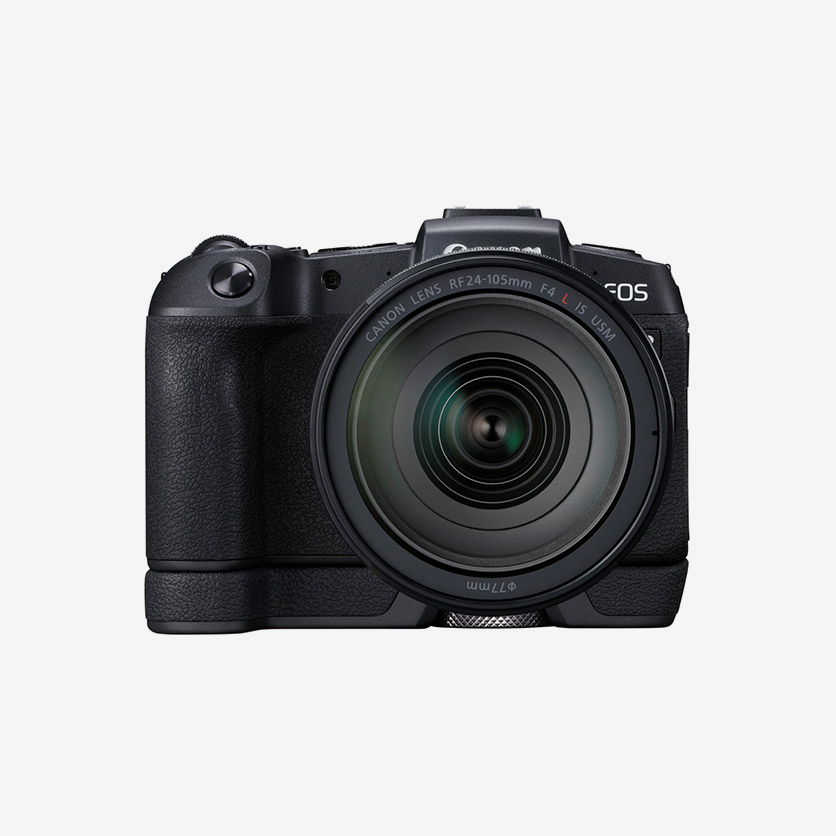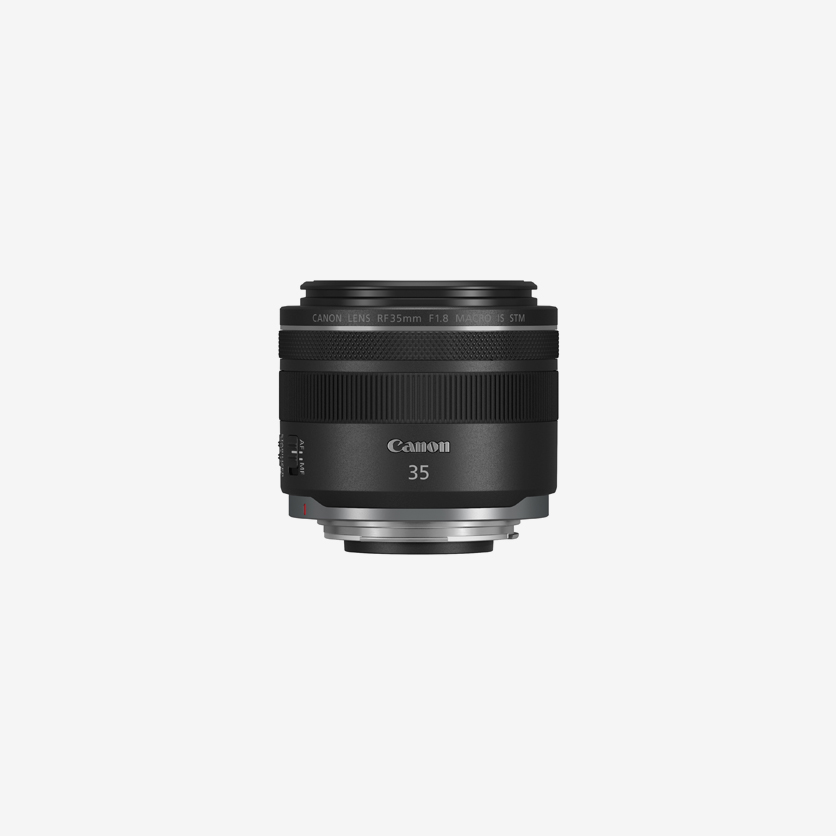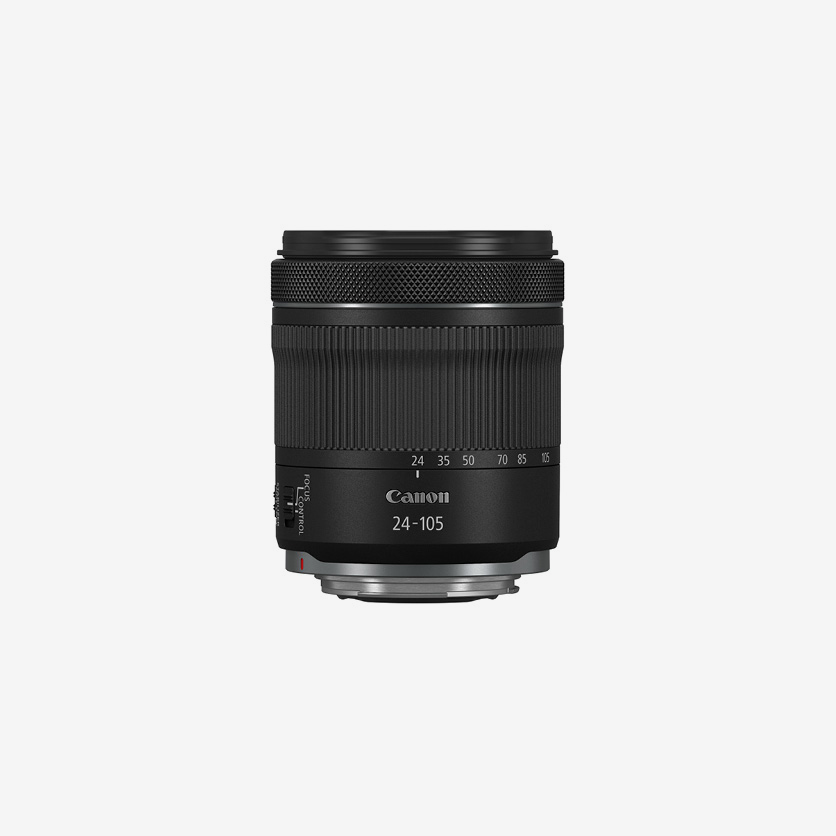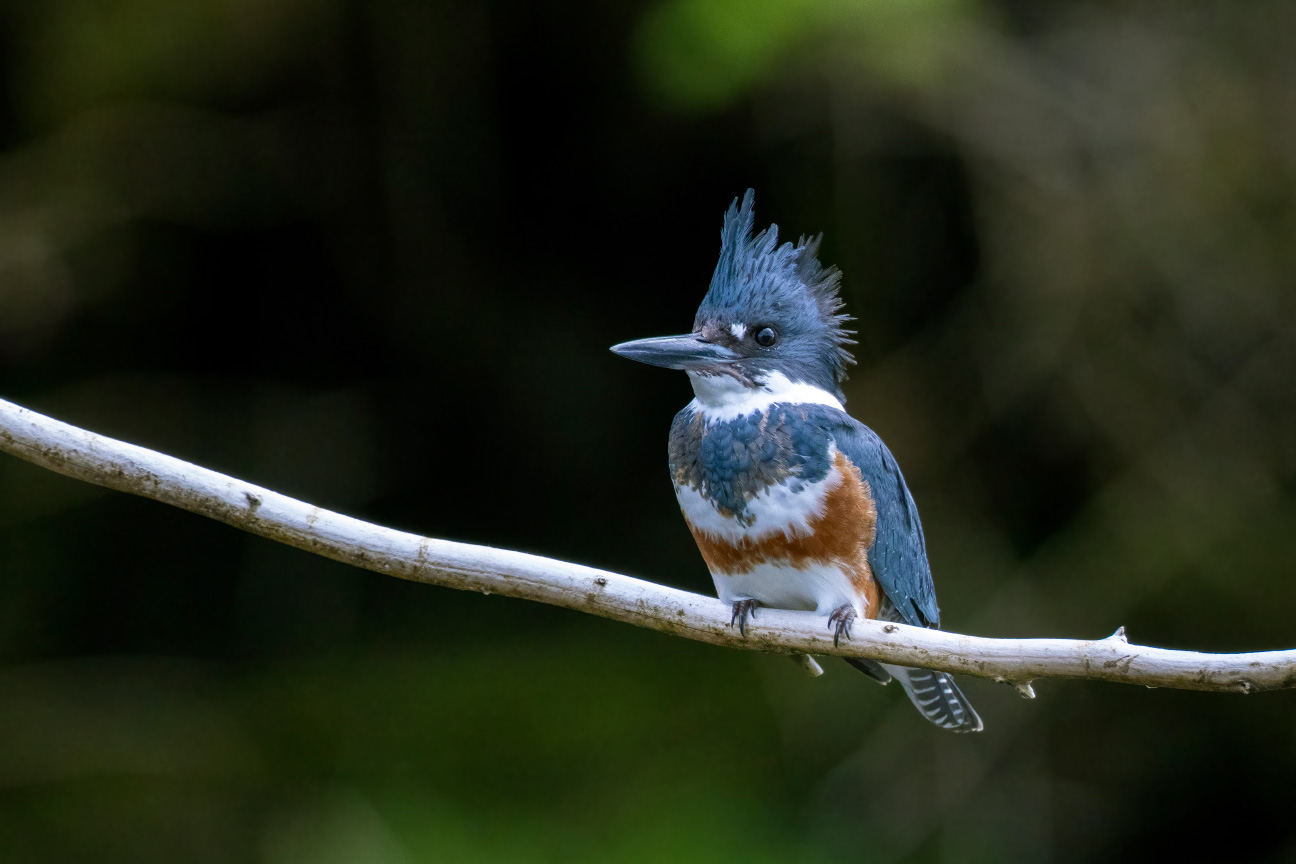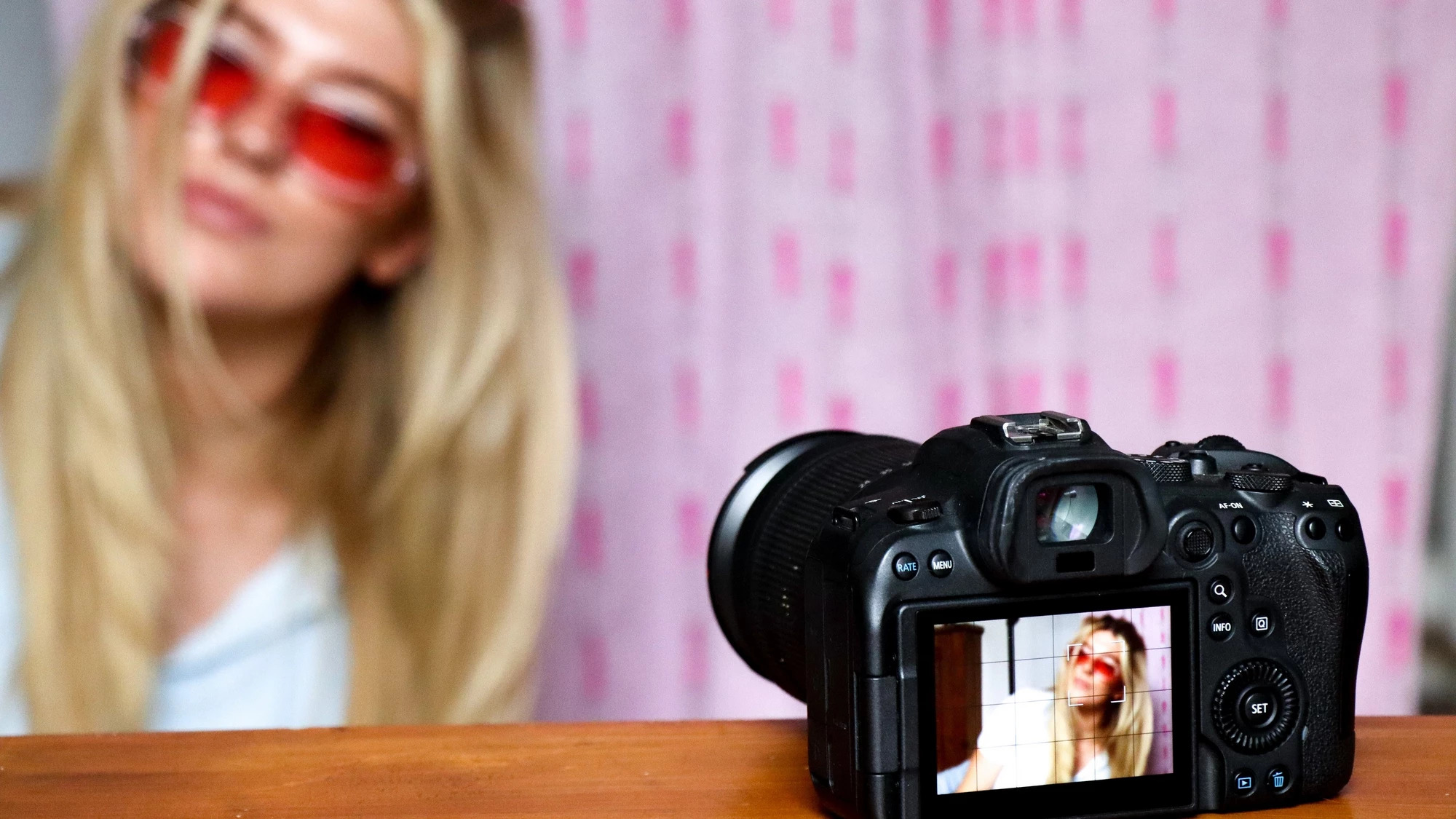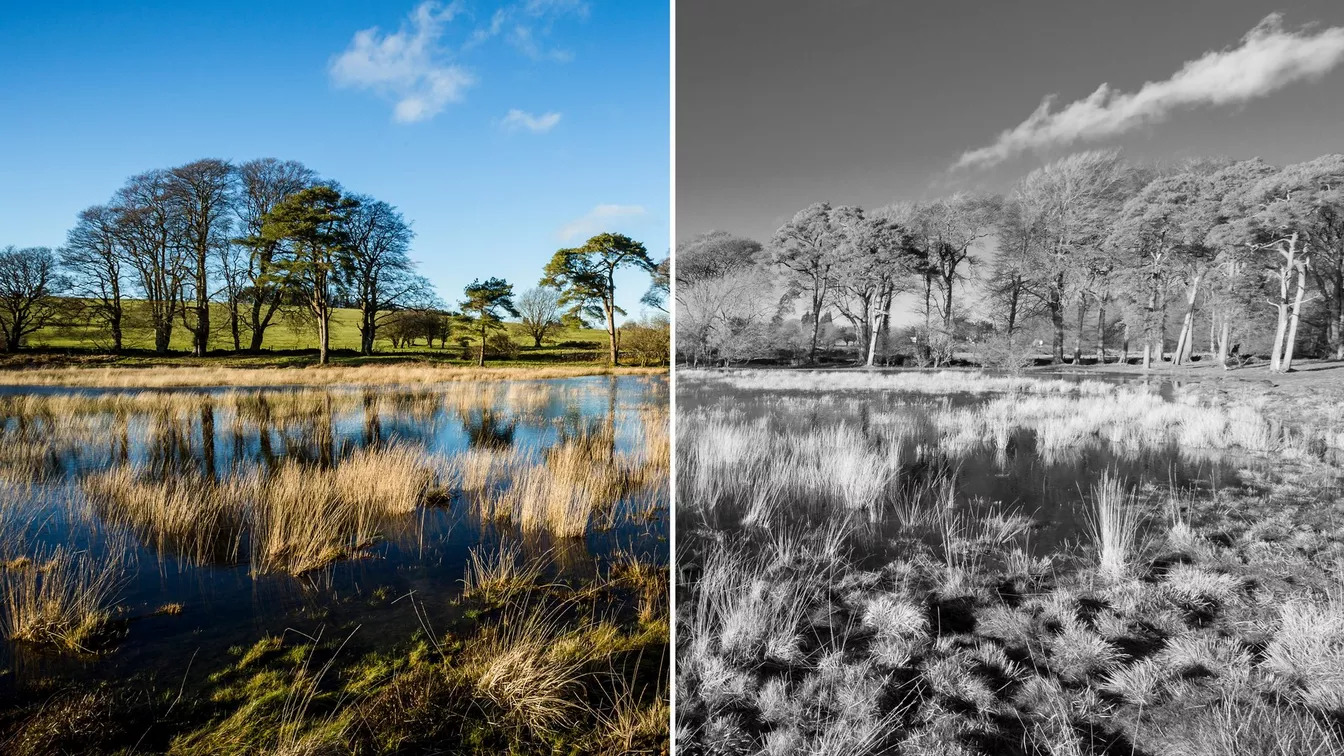From blurred waterfalls to falling droplets, discover these five top tips on how to photograph water.
If you’re looking for a relaxing break from everyday life, the water probably isn’t far away – from a family day out by the beach to a country walk alongside a meandering river, many people enjoy the calming effects of water in nature. So whether it’s a crashing wave, the blurry haze of a waterfall’s spray or the reflections in a still lake, it’s likely water will feature in your shots this summer. But how do you capture eye-catching photographs of such a varied and motion-filled subject? There are plenty of creative choices to make in order to enhance your summer snaps.
These five water photography techniques will help take your images to the next level, whether you’re exploring in the summer weather, or finding subjects closer to home during colder months.
1. How to shoot reflections in water
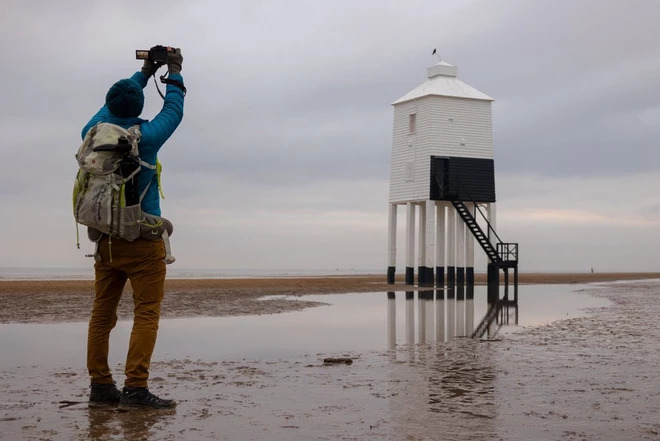
Experiment with camera height when framing a reflection: a high angle may show it more clearly, while a low angle can take you closer to the surface for a more dynamic view.
A large body of still water is ideal for capturing clear reflections, which are a great way to add interest to an otherwise plain landscape. Look out for water when out and about – flowing streams will give you more abstract reflection effects, while the still surface of a puddle can create a calmer, more mirror-like reflection. If this is what you’re after, find a sheltered spot or wait for the breeze to die down before taking your shot.
Setting your camera to Aperture Priority (Av) mode enables you to select the aperture while the camera automatically adjusts the shutter speed for the correct exposure. To ensure both the foreground and the reflected details in the distance remain sharp, choose a narrow aperture and use the Depth of field (DOF) and Hyperfocal distance calculator on the Photo Companion app. Hyperfocal distance focusing helps you get more of your frame sharp by finding the closest point at which you can focus and keep your background acceptably sharp.
As an alternative to a narrow aperture, you could try using a very wide aperture to blur out either the foreground or the reflection for an abstract effect.
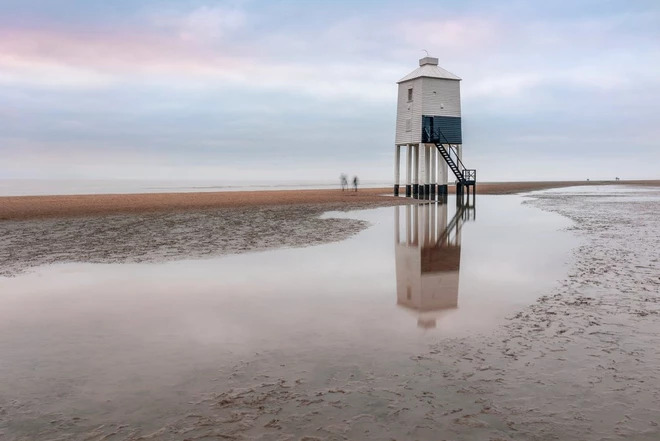
Perhaps the most photogenic aspect of water is its reflective quality. Taken on a Canon EOS R6 and a Canon RF24-105mm F4-7.1 IS STM lens at 31mm, 1 sec, f/16 and ISO100.
2. How to photograph waterfalls
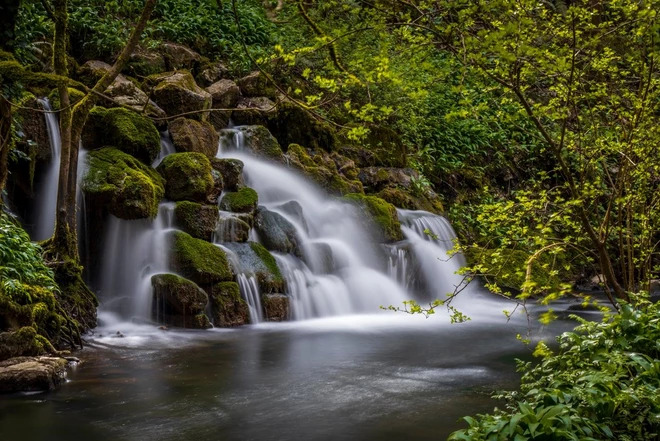
You’ll need a long exposure to capture falling water as a stunning motion blur. Taken on a Canon EOS 850D with a Canon EF-S 18-135mm f/3.5-5.6 IS USM lens at 64mm, 15 secs, f/20 and ISO100.
Next time you’re out hiking and spot a crashing waterfall that’s calling out to be captured in a photograph, ensure you make the most of it by adding a Neutral Density (ND) filter into your camera setup. ND filters prevent light from entering the camera in measured amounts (stops), which gives you more control when selecting shutter speed. A 6-stop ND filter is ideal for waterfalls – and arguably the best all-around filter for blurring water. Before you start shooting, study the flow of the waterfall and take note of where it foams at the base as this is the area that will form beautifully blurred streaks.
For a simple setup, adjust your camera to Manual (M) mode with a small enough aperture to ensure deep depth of field and ISO100, then adjust the shutter speed until the metering looks right. Next, attach the ND filter and tweak the shutter speed accordingly. Each stop of light blocked by the ND filter lets you double the exposure time. The count-the-clicks method can be useful for recalculating, as it’s either two or three clicks on the shutter speed dial per stop (depending on the stop increments set in your camera menu).
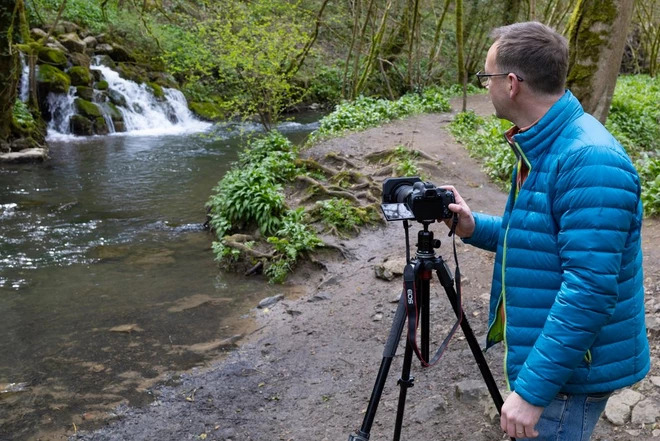
Neutral Density (ND) filters are great for blocking light, but they can also make it tricky to see through the viewfinder. To combat this, use Live View to compose and focus, then set a two-second timer to help prevent camera shake.
3. How to smooth over the sea
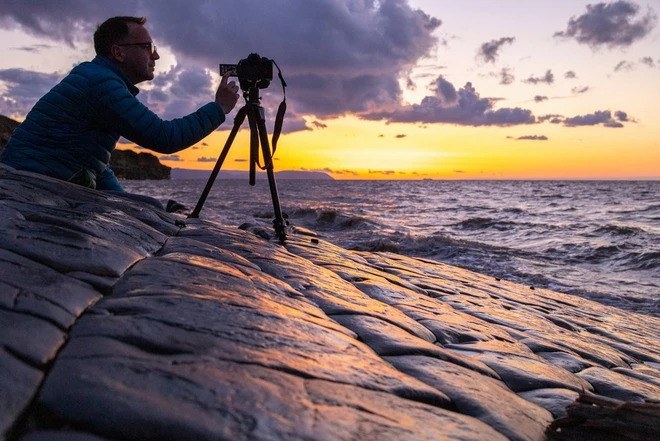
Pairing your camera with the Canon Camera Connect app enables you to start and stop minutes-long Bulb (B) mode exposures with your phone, meaning you can engage the shutter for as long as you like.
A meandering beach walk is one of summer’s greatest pleasures and one you’ll love to capture for your album. But while the ocean may be one of the most spectacular natural sights, the water’s choppy surface can sometimes look messy when frozen in a photo. By using a very long exposure to blur the motion of the sea, you can transform the foaming water into a silky smooth, detail-free surface. If you’re shooting during daylight, you’ll need a strong ND filter that blocks about 10-16 stops of light. In the twilight, you may need a weaker ND or none at all – try an early morning wander if you want to check this out, and enjoy the calm of having the beach almost to yourself as you set up your shot.
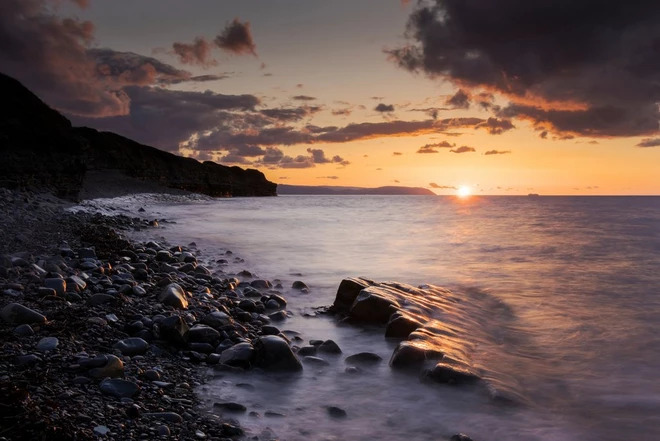
When exposures last for up to a minute you can capture a striking milky blur in the sea and gentle movement in the clouds. Taken on a Canon EOS 850D with a Canon EF-S 18-135mm f/3.5-5.6 IS USM lens at 24mm, 2.5 secs, f/16 and ISO100.
4. How to photograph crashing waves
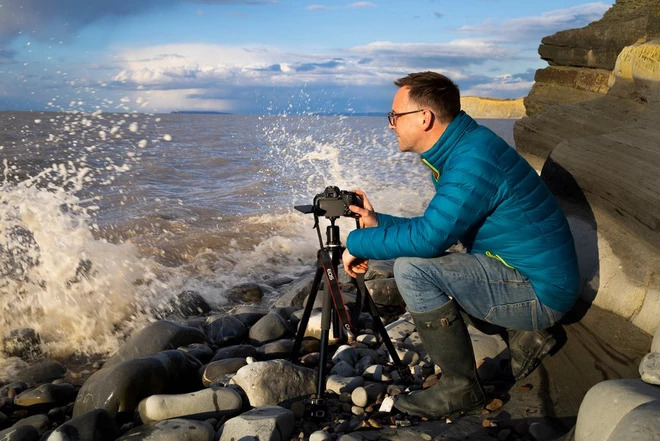
It can be tricky to judge the timing when shooting waves, so set the camera drive mode to high-speed continuous and fire off a series of rapid shots as the water crashes in.
If you want to freeze the dramatic motion of the sea, you’ll need a fast shutter speed of about 1/500 sec. Alternatively, a slower shutter speed can help to convey the sense of movement by transforming the splashes and drops into explosive streaks of blur. Try setting your camera to Shutter Priority (Tv) mode and drop the shutter speed to about 1/20 sec with ISO100. At this shutter speed, it’s best to use a tripod, but you can shoot handheld as long as you keep still.
If you have a lens with IS, or an EOS R5 or EOS R6 Mark II with in-body IS, and you are using a wide-angle lens, following the ‘reciprocal’ rule of thumb, a 1/20 second exposure can be shot handheld with a 20mm lens.
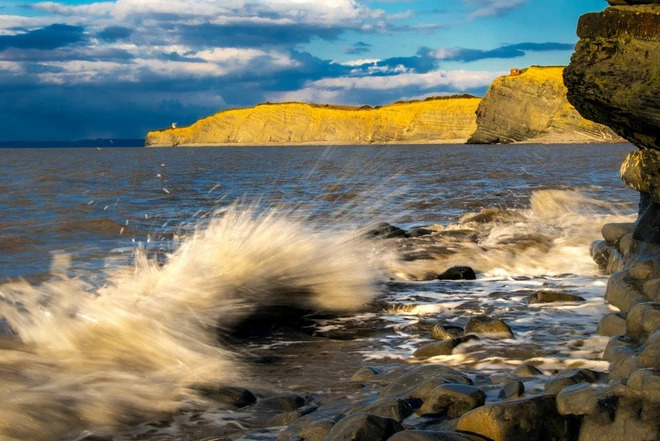
Nothing demonstrates the majestic power of water quite like a crashing wave – experiment with different shutter speeds to vary your final image. Taken on a Canon EOS 850D with a Canon EF-S 18-135mm f/3.5-5.6 IS USM lens at 27mm, 1/20 sec, f/25 and ISO100.
5. How to freeze water droplets
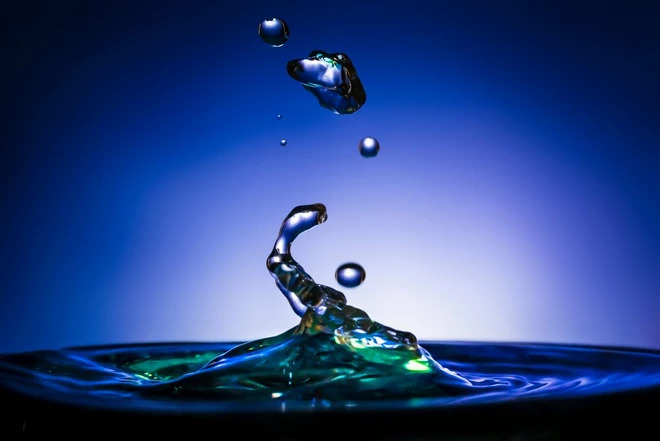
Positioning the flash behind a sheet of blue acetate creates colourful reflections on the water.
Unfortunately, the weather isn’t always on our side. If that’s the case, you can always practise your water photography closer to home, and water droplets can look incredible when viewed up close. To catch the action of a falling water drop you’ll need to use an external flash, such as the Canon Speedlite EL-100, and shoot in a dark location. This way, you can use the flash duration (the length of the burst of light) to freeze the motion as the drop hits the surface of the water below.
Practise the technique by setting up a water dropper or syringe above a glass of water and positioning a flash to light the drop from behind. Set the camera to Manual (M) mode at f/8, ISO100 and with a shutter speed of approximately two seconds. Start the exposure, drop the water, and then either fire the flash manually when the droplet hits the surface or use a remote trigger to fire the flash automatically. It’s a challenge for your camera skills and lighting technique but the results can be spectacular.
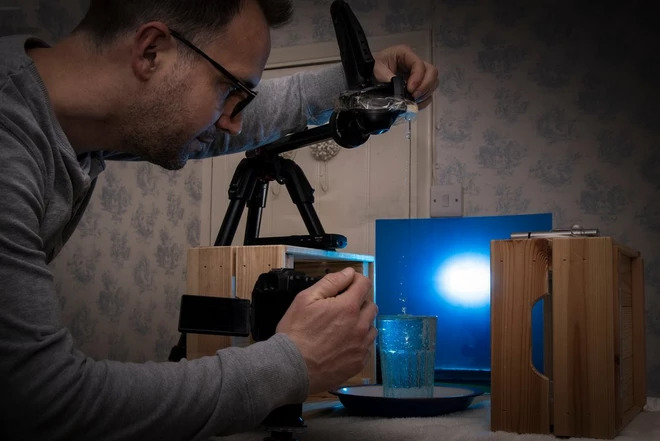
A macro lens such as the RF35mm F1.8 Macro IS STM, which James used to capture this photograph, enables you to shoot close-up water drops in fine detail. Focus manually beforehand on the spot where the drop will fall. Taken on a Canon EOS RP and RF 35mm F1.8 Macro IS STM lens 2 secs, f/16 and ISO100.







